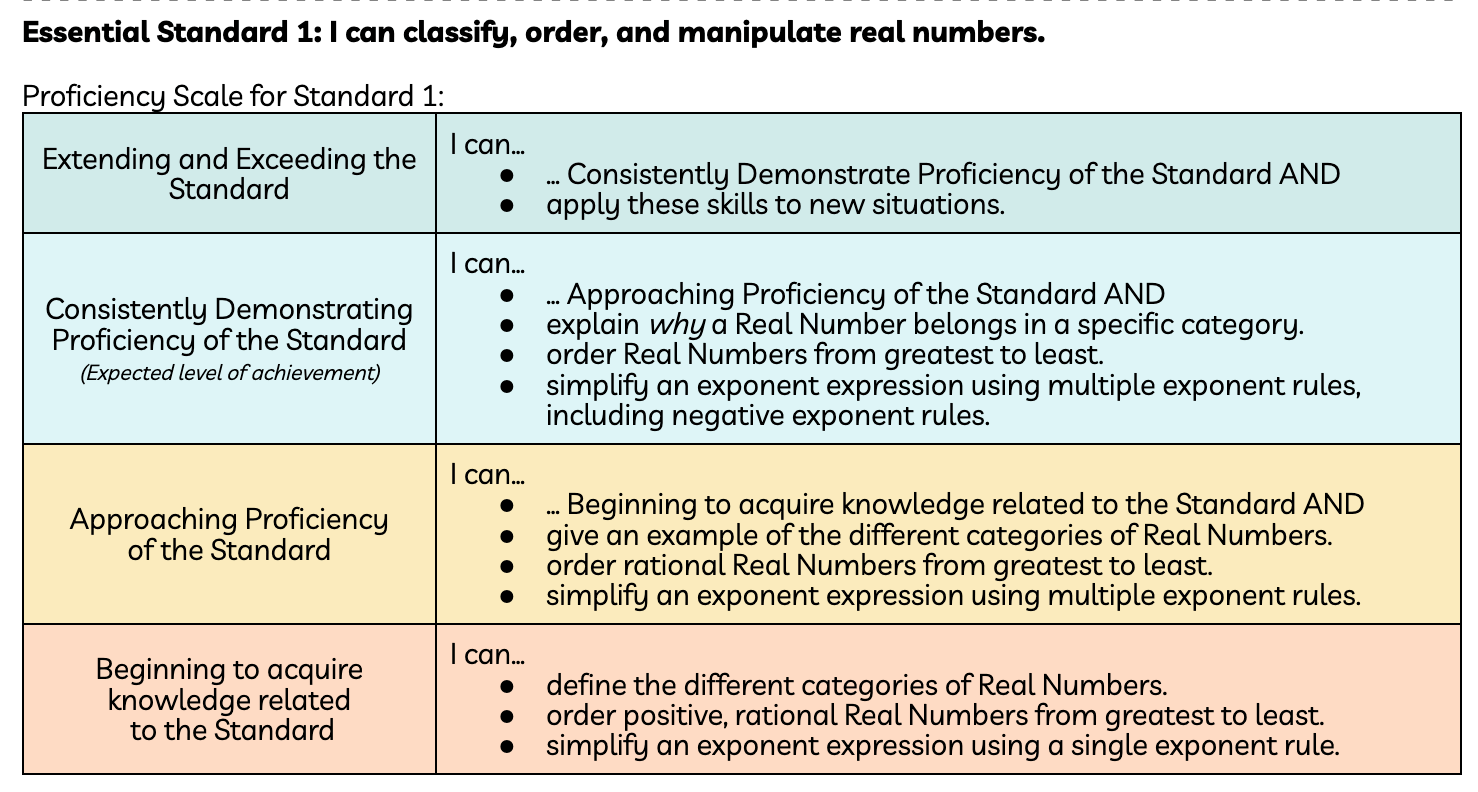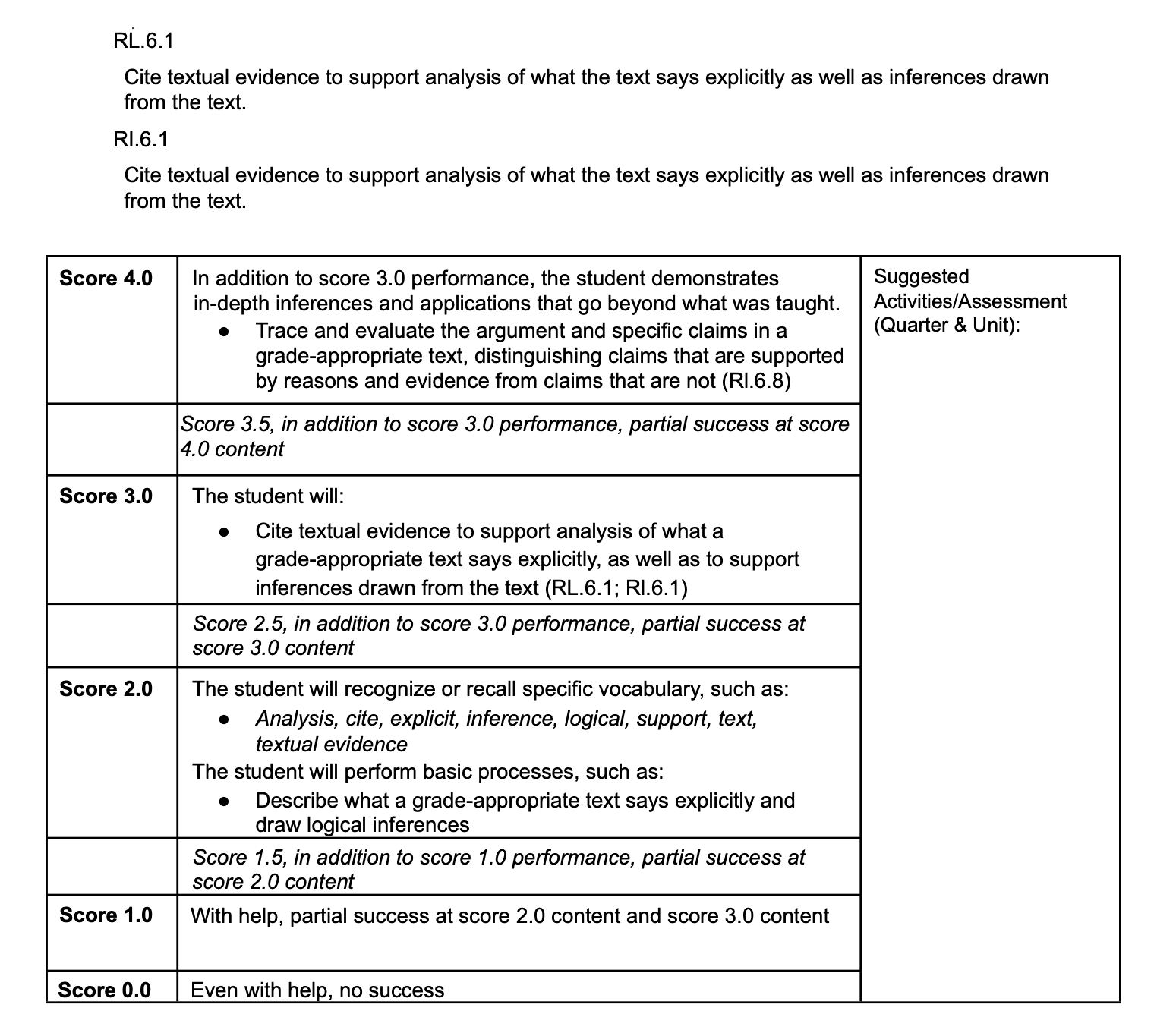As a teacher in a Title I school, many of my students lag behind in meeting benchmarks each year. To teach them my grade-level standards, I began by attempting to remediate missed learning. However, their progress was limited. Attempting to backtrack to their level took too much time and resulted in frustration and disengagement. To achieve more within the year, I began using the accelerated learning approach by integrating the required concepts for specific standards into the current lessons. I saw increased student engagement and achievement. And when I started using Proficiency Scales, my students’ motivation soared!
Accelerated Learning Key Takeaways
- Accelerated learning works best when built into current lessons, not through backtracking.
- Proficiency scales help students track their own progress and stay motivated.
- Student goal-setting and self-reflection boost engagement and achievement.
For example, before introducing a unit on poetry, I would review figurative language, and have students practice writing with figurative language and then identify different types of figurative language within the poetry we were currently reading. I would assess as I went, identifying students who might need more targeted support or specific interventions.
In Accelerated Learning, teachers use accelerated learning to revisit previous skills or standards in the context of when students need to use them.
How Can Accelerated Learning Build a Strong Core?
Within Core Instruction (also known as Tier 1 Instruction), there may be areas where many students need to “catch up,” whether from unfinished learning, absenteeism, out-of-class placement, or other barriers to consistent education. Constructing a core curriculum for accelerated learning begins with universal screening and then using that data to prioritize the standards that are absolutely essential for making progress.
Integrating accelerated learning helps swiftly address large groups of students falling below grade benchmarks.
With these prioritized or “power” standards in mind, educators can reverse-engineer a path to mastering them. This step-by-step path can then help students monitor their own progress.
Power Standards
The term “power standards” was coined by Larry Ainsworth, a lifelong educator and Executive Director of Professional Development at the Leadership and Learning Center in Englewood, Colorado. He suggests that power standards meet the following criteria:
-
Learning Endurance: Does the standard offer skills or learning beyond one test on grade-level?
-
Learning Leverage: Is this standard relevant across other disciplines? When a standard has skills that apply in other content areas, it has leverage.
-
Learning Readiness: Does this standard provide students with the tools and skills they need for the next unit, course of study, or grade-level? Learn more about Power Standards here.
Proficiency Scales and Student Goal Setting
One way to achieve accelerated learning is to involve students in setting their own learning goals. Research has shown that student agency can impact student achievement.
Similar to setting health goals based on current health status, students need background information on their progress. Using proficiency scales based on essential standards helps break down content into manageable chunks, especially when expressed in student-friendly language at their grade-level.
Student buy-in for accelerated learning begins when students clearly understand the goal, where they are starting with the goal, and what it will take them to reach it.
To break down content for student understanding, use proficiency scales based on power or essential standards. Introduced by Robert Marzano, proficiency scales indicate the learning progression for a given standard or learning objective.


When using proficiency scales for student reflection:
- Introduce a learning objective and topic.
- Have students read through the proficiency scale, and maybe even write each level in their own words.
- Have students identify what they might already know about the learning objective, and rate themselves on the scale prior to instruction.
Downloadable resource: Proficiency Scale Reflection Page Template
Empowering Students as Active Participants
In my experience, students who are behind know it and often feel overwhelmed and frustrated about school. As we work to advance students in their learning, we aim to empower them to be active participants in their own growth. Using Proficiency Scales helps ease frustration and gives students a sense of accomplishment as they progress step by step.
Citations
- Hoegh, Jan K. 2019. A Handbook for Developing and Using Proficiency Scales in the Classroom: (A Clear, Practical Handbook for Creating and Utilizing High-Quality Proficiency Scales in the Classroom.) N.p.: Marzano Resources.
- Schwartz, Sarah, Maria Lopez, Jack Lowe, Laura Buckman, Evie Blad, and Larry Ferlazzo. 2022. “Schools Want to 'Accelerate' Student Learning. Here's What That Means.” Education Week. https://www.edweek.org/teaching-learning/schools-want-to-accelerate-student-learning-heres-what-that-means/2022/03.
- Shurley, Brittany, and Susan Long. 2022. “How To Set Students Up for Success in Tiertnp 1 Through Accelerated Core Instruction.” Branching Minds. https://www.branchingminds.com/blog/how-to-create-an-equitable-tier-1-in-mtss-through-accelerated-core-instruction.

About the author
Larissa Napolitan
Larissa Napolitan is the Content Marketing Manager at Branching Minds and host of the Schoolin’ Around podcast, where she spotlights innovative voices and practices shaping education today. A former middle school teacher and instructional coach, Larissa draws on her classroom experience to create meaningful content that connects research, storytelling, and practical insights for school and district leaders. She is passionate about amplifying educator voices and supporting the growth of all students.

Your MTSS Transformation Starts Here
Enhance your MTSS process. Book a Branching Minds demo today.
















.png?width=716&height=522&name=5%20Tips%20for%20De-Escalation%20and%20Building%20Strong%20Relationships%20with%20Students(preview).png)
